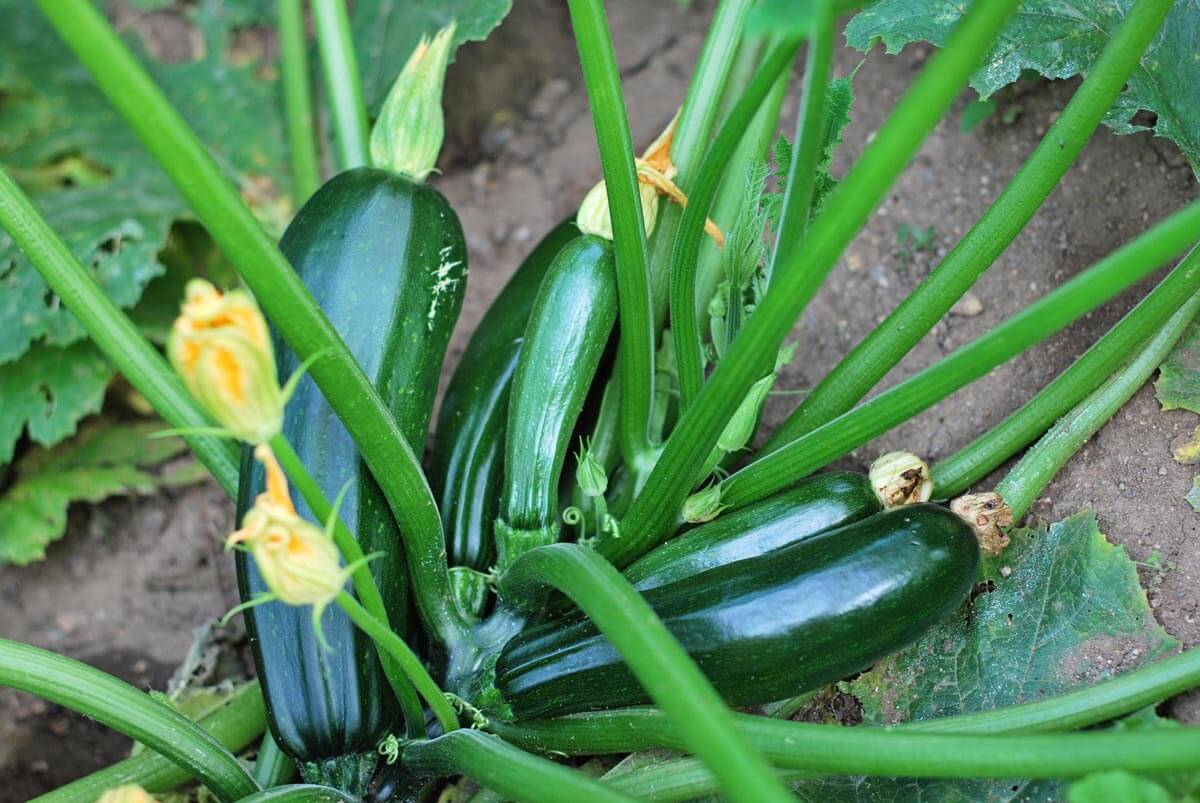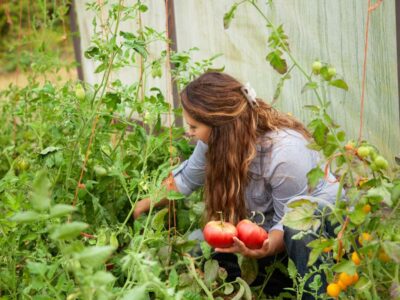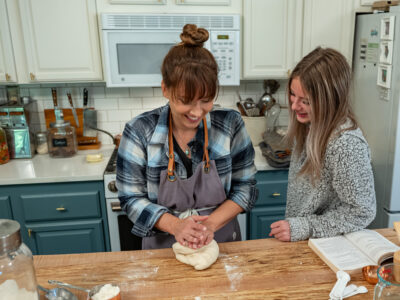Learn how to preserve zucchini in the summer months to enjoy the fresh taste of zucchini all year round. Then head over to my post with 144+ ways to use zucchini for endless inspiration.
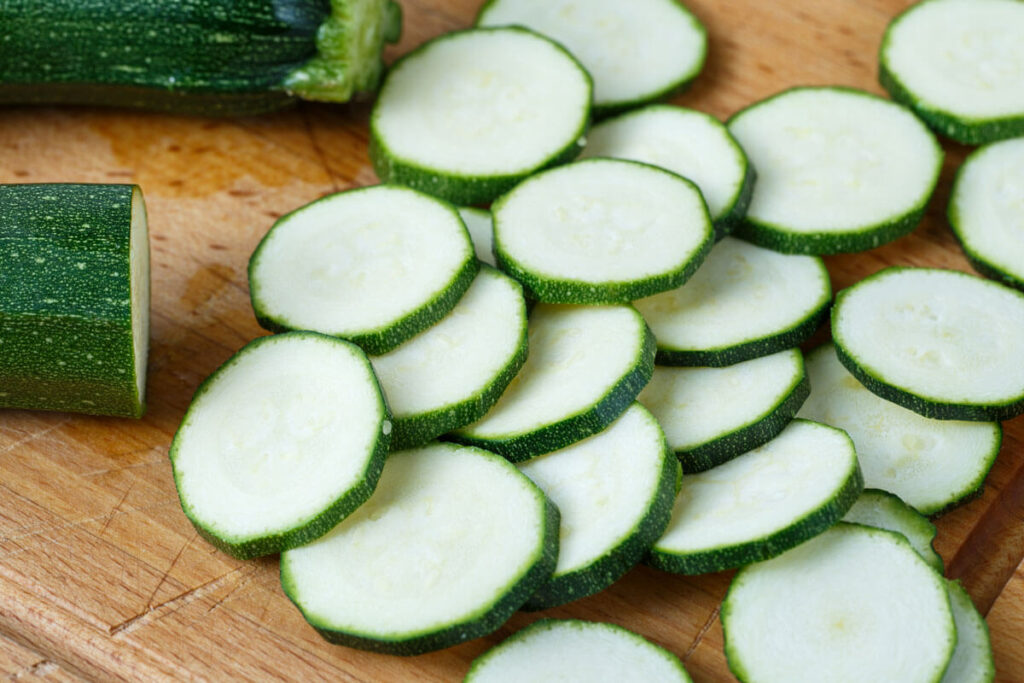
For many of us who have a garden, you know well enough that zucchini is a prolific producer.
🍞 Struggling With Sourdough?
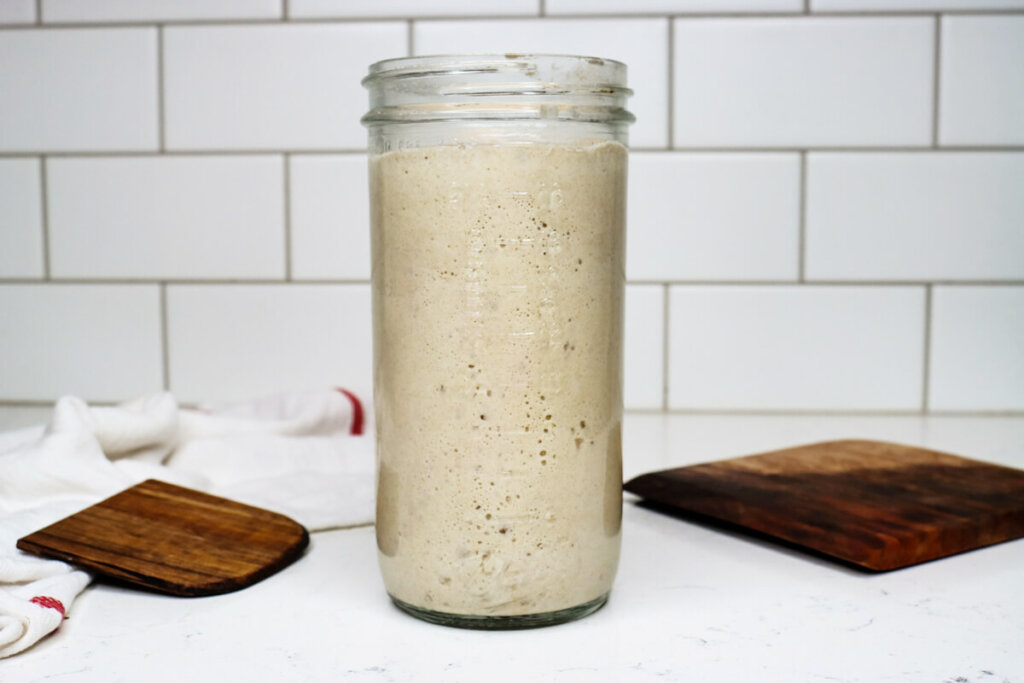
If your starter won’t take off, your loaves are dense and hard, or sourdough just flat-out overwhelms you…
👉 I’ll show you how to fix all of it.
Join my FREE live workshop and learn how to make a bubbly, active starter—the right way, from Day One.
🗓️ Jan 12 @ 1pm PT
There comes a time during the season when we run out of ideas and ways to use up all the zucchini coming in from the garden. We can only make so many batches of blueberry zucchini muffins (or more accurately, there’s only so much baking one has time for during the harvest!)
This is why there’s the joke that you must lock your car doors in the summertime, otherwise your neighbors will start leaving their extra zucchini in your car!

Table of Contents[Hide][Show]
Ways to Preserve Zucchini
Not all preservation methods are safe when it comes to zucchini. I want to be sure to emphasize this because there are websites and even books out there that recommend pressure canning as a safe option.
I will never recommend unsafe preservation methods. Because of my passion for preserving, I’ve written a book called Everything Worth Preserving, which teaches the nine home food preservation methods to safely store delicious food for year-round eating.
The book includes all of my step-by-step tutorials, recipes, and easy-to-use charts. I teach you everything you need to know about cold storage (aka freezer), water bath/steam canning, pressure canning, dehydrating, fermenting, freeze-drying, root cellar, infusion, and salt/curing.
Preserve food for a healthy well-stocked pantry & peace of mind, all in one resource. The book is available for pre-order now. Grab your copy (and FREE bonuses for pre-ordering) here.
Continue reading for my take on pressure canning zucchini, as well as the safe and tested methods for how to preserve zucchini.
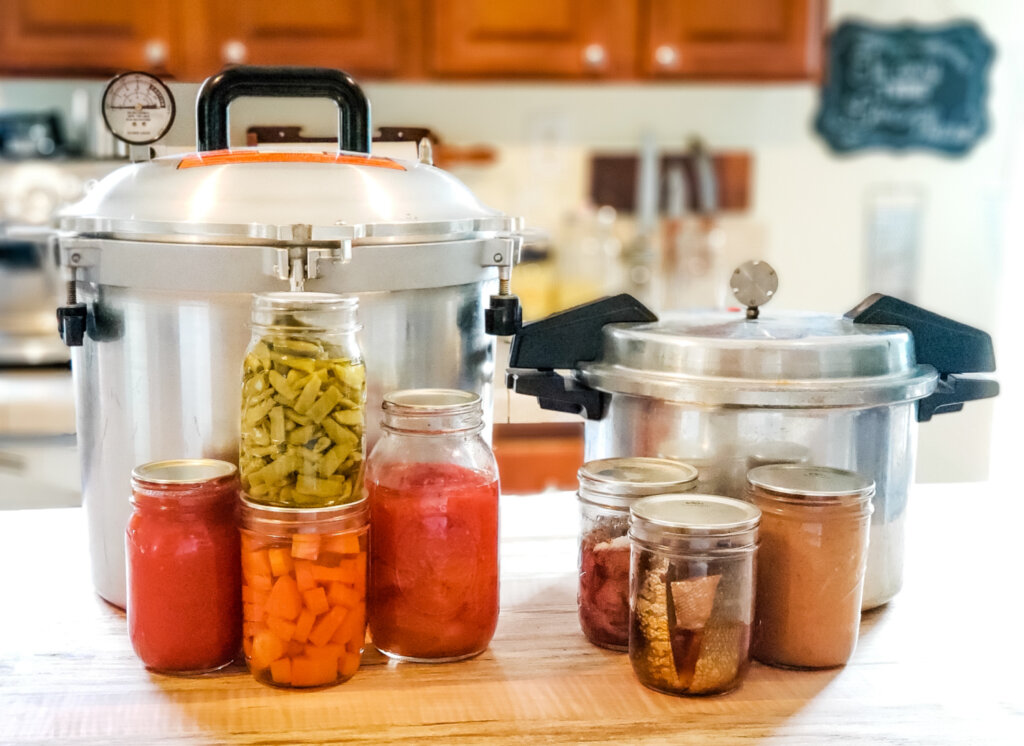
Pressure Canning
When we talk about preservation techniques, I know many of our minds immediately go to canning.
However, in the mid-1990s, a university studied preserving zucchini (summer squash) and found that it got so mushy as it cooked down that it was too dense for the internal temperature to reach a high enough level to kill botulism spores.
Because of this, zucchini has been removed from the recommendations for food that can safely be pressure canned.
Canning safety and rules are something I follow wholeheartedly because I don’t like to play around with people’s safety, especially when it comes to botulism (read up on botulism dangers beyond canning, that you need to know).
The only way zucchini can be safely pressure canned is when it’s combined with other foods, such as this Tomato with Zucchini recipe from the National Center for Home Food Preservation (NCHFP).
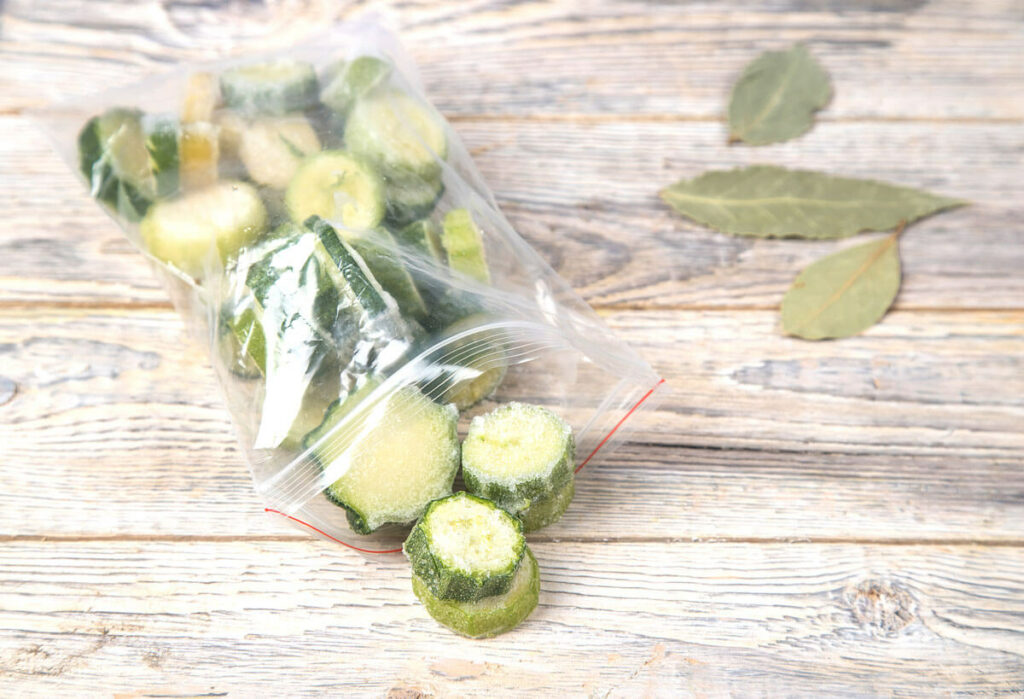
Freezing
I like to cut my zucchini into rounds or cubes and then blanch and freeze them to toss into pasta sauce, soups, stews or stirfry.
I only blanch zucchini when it’s in cubes or rounds, which stops the enzymatic process. When freezing shredded zucchini, I don’t blanch them.
If you don’t blanch your squash, the flavor and texture change. It’s not bad, but it’s just not as good as it can be when blanched first.
Pro-Tip: If used in soup or spaghetti, just toss it in frozen to your sauce. It will cook to almost nothing, adding moisture and extra veggies to your dish.
p

I also like to shred zucchini and freeze it to use in quick breads like my favorite double chocolate zucchini muffins or my chocolate sourdough bread.
How to Freeze Zucchini
To freeze shredded zucchini, I simply squeeze out as much moisture as possible, measure exactly how much zucchini a recipe calls for and store it in that sized portion in a Ziplock freezer bag.
Pro-Tip: To save on resources, I use one bag, separating the two portions with a zip tie. When ready to use frozen zucchini, just pull out the first frozen bunch and allow it to thaw in a bowl for baked goodies.
I then make a point to use up the shredded zucchini within a few months so the flavor is at its best.
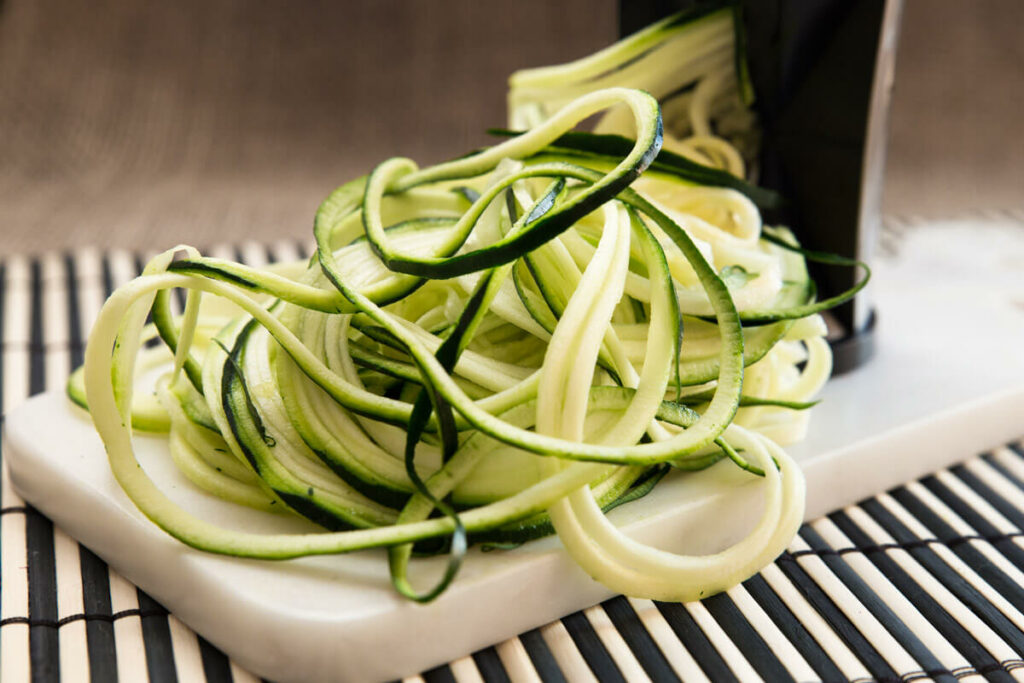
Dehydrating
Dehydrating is a great option for preserving zucchini. I have dehydrated both zucchini rounds as well as zucchini “zoodles”.
Fresh zucchini zoodles are incredible. If you want to dehydrate them, it’s best to rehydrate them with some warm pasta sauce or another thick sauce. The texture remains a bit chewy, not like when fresh, but still good.

Freeze Drying
Zucchini freeze dries beautifully. Freeze dried zucchini is my go-to, quick and easy method to preserve it.
I like to slice my zucchini into coins, soak them in a little bit of vinegar, drain it then add a bit of sea salt. This makes for some healthy “chips” because they’re nice and crunchy.
Another favorite is to sprinkle a little powdered dill and garlic salt then dehydrate.
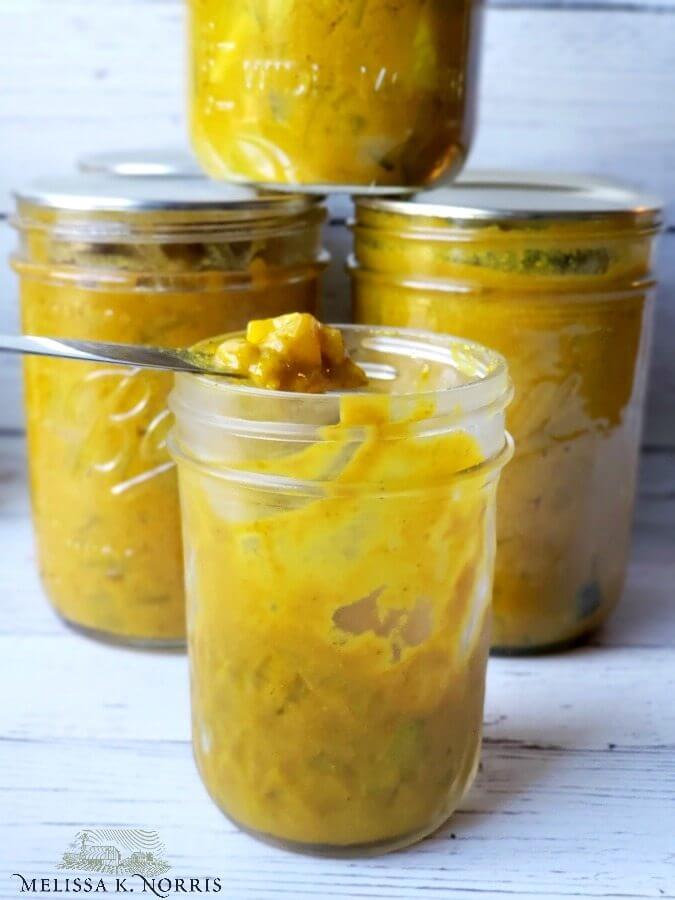
Canning
As mentioned above, pressure canning zucchini on its own is out of the question, but what you can do is combine zucchini with other ingredients to change the pH of the recipe and make it safe for water bath canning.
One of my favorite canning recipes for zucchini is this mustard pickle recipe. The original recipe calls for cucumbers, but this happens to be one that is safe to substitute with zucchini.
Not all cucumber recipes can be safely changed to zucchini, but this one can.
This mustard pickle recipe has been handed down from my husband’s great-grandma and holds a very special place in my heart. Unfortunately, her recipe called for flour, which isn’t safe for canning, so I researched and found the right substitute ratios using Clear Gel.
It’s a great cross between a pickle and a relish and we love it on hamburgers, hot dogs, and especially when mixed with potatoes and hard-boiled eggs for a delicious potato salad.
Some of the other canned zucchini recipes:
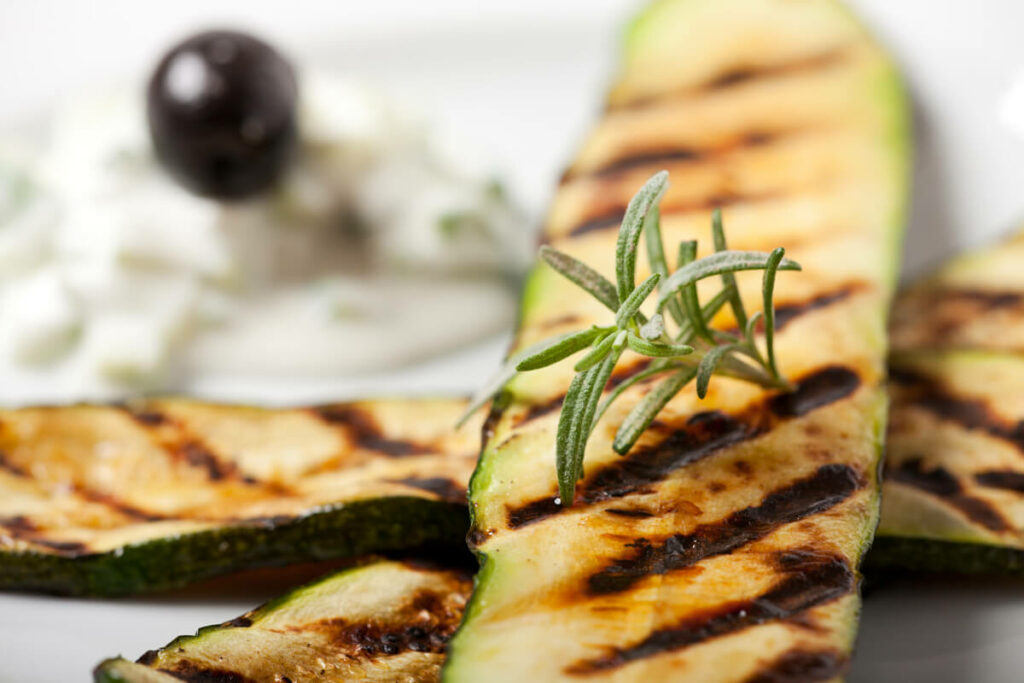
More Ways to Enjoy Zucchini
As I mentioned before, I have over 144 zucchini recipes to choose from, as well as more recipes in my book, Everything Worth Preserving.
But a couple of bonus ways I enjoy using up our zucchini is by fermenting them in slices, much like a regular fermented pickle. Though fermenting isn’t considered a long-term preservation method for zucchini, it’s incredibly delicious as a pickle stand-in!
Our very favorite way to enjoy those first few fresh zucchini that come out of the garden is to slice them in half, brush them with olive oil, sprinkled them with garlic salt, and grill. We then sprinkle some parmesan cheese on top while it’s still hot and dip it in ranch dressing.
If you have some tested and safe preserved zucchini recipes, please drop them in the comments section so everyone can benefit!
More Posts You May Enjoy
- How to Harvest & Store Potatoes (w/out a Root Cellar)
- How to Store Vegetables Without a Root Cellar
- 10 Ways to Preserve Food at Home
- Tips for Home Food Preservation – Seasonal Preserving Each Month
- A Complete Guide to Home Food Preservation (What to do When You Can’t Find Canning Supplies)
- Home Food Preservation- Preserving Plan for a Year’s Worth of Food
- How to Pick the Best Preserving Methods
- The Science of Home Food Preservation
- Planning and Preserving Q&A with Melissa
[fusebox_transcript]
